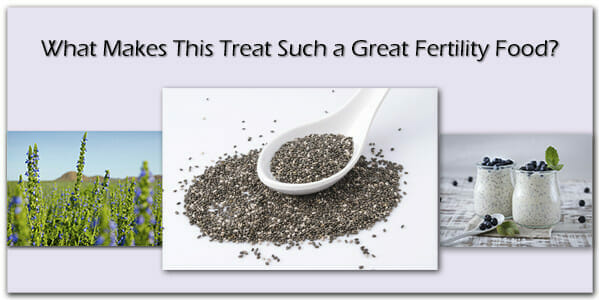Getting Pregnant with Low AMH Levels: The Fertile Heart OVUM Approach.
By Julia Indichova.
Before you even begin reading this article, if you’re wondering about your chances of natural pregnancy or with a low AMH diagnosis or a successful outcome of your next IVF and need a shot of inspiration, be sure to read this after you’re done with this page: FSH 150, AMH 0, 01 and a Baby on the Way.
What is Anti-Mullerian Hormone (AMH)?
AMH, another acronym that has been showing up as a troublesome marker linked to infertility, stands for anti-mullerian hormone, a substance produced by granulosa cells at the earliest (primordial) stage of ovarian follicle development. Since the number of these primordial cells is linked to the number of follicles that ultimately grow into viable, fertilizable eggs, AMH levels are used to assess a woman’s remaining egg supply.
For inspiration on how to best protect yourself from a current confusion among fertility experts and fertility patients struggling to navigate the landmines of an increasingly more bewildering and competitive industry, my blog post Low AMH, High FSH and Anything in Between, might be a useful read.
Case Study: Low AMH Levels and naturally conceived twins at 42
To illustrate just how misleading the low AMH levels diagnosis can be for both patient and fertility specialists, consider a case history of Anna H. who at 41 was diagnosed with an FSH of 22.1 and an AMH of less than .16. Anna was advised to move on to egg donation as her best option of achieving pregnancy.
“We were not ready for this. I wanted to use my own eggs, so we did go through an IVF cycle in June one year after our marriage. It was a long month that resulted in heartbreak.” Her insurance would cover another cycle of IVF, but she and her husband were not certain they wanted to go through another IVF.
In her search of alternatives she found Fertile Heart and a few months after attending the Woodstock workshop and the post workshop support circles Anna conceived her twins naturally. You can read more about Anna’s story on our Natural Pregnancy after Failed Treatment page.
Measurement of Anti-Mullerian Hormone Levels
The current, most common measurement of AMH levels is as follows:
| High AMH | Over 3.0ng/ml |
| Normal AMH | Over 1.0ng/ml |
| Low Normal AMH | 0.7-0.9ng/ml |
| Low AMH | 0.3-0.6ng/ml |
| Very low AMH | Less than 0.3ng/ml |
The above values are then used to predict chances of conception with higher numbers indicating a larger ovarian reserve and as such a more promising odds of pregnancy and lower levels mirroring poor reserve and poor chances of conception.


Opinions on AMH Levels and Conception Rates
Opinions among reproductive endocrinologists range from fertility doctors who claim that AMH level is the gold standard test (Dr. Angeline Beltsos, a guest teacher at the Fertile Heart Guest Teacher Series is one of those specialists.) for measuring ovarian reserve, to fertility experts who feel that Anti-Mullerian Hormone test results are mostly useful in assessing a woman’s response to ovarian stimulation for IVF, where retrieving more eggs is thought to increase chances of pregnancy.
Based on the last 20 years of counseling, research, and a review of several studies on the subject, I once again suspect that the conventional interpretation of AMH levels as they relate to conception rates is highly misleading. It is, as with high FSH levels, drawing conclusions that are sending countless women into a tailspin over their rapidly decreasing odds of getting pregnant and pressuring them into treatments that may not only harm their remaining ovarian reserve but rob them of the opportunity to assess the root cause of their “infertility.”
The three studies cited below report interesting findings which to me validate my own thoughts and experience with AMH levels. The first study reports the case of two women with very low AMH levels who became pregnant spontaneously, the second study compared AMH levels of two groups of healthy women: obese and non-obese. The obese women, whose overall level of health and organ function may have been compromised, had lower AMH levels. And the third study explores the link between Vitamin D levels and low AMH and is the subject of another article titled Low AMH and Vitamin D Link: A Step toward Solving the Low AMH puzzle.
The current scope of information about Anti-Mullerian Hormone is simply inadequate for predicting conception. AMH levels though they may reflect a diminishing size of the remaining ovarian pool, are also a reflection of ovarian function related to a woman’s overall level of health. Since AMH levels do not reflect egg quality, when the overall level of the woman’s health—be it physical, emotional or spiritual —increases, chances of pregnancy increase.
That’s what the Fertile Heart OVUM Mind Body Program is all about, allowing the wisdom of our bodies to guide us in decoding the messages behind our symptoms, be they Low AMH or any other hormonal imbalance. Some of those symptoms may reveal underlying latent deficiencies such as low Vitamin D levels, the less tangible obstacles to pregnancy reveal themselves through patient practice of the radically holistic Fertile OVUM tools.
You may want to also read our Low AMH, High FSH Success Stories to learn about the successes of some of the Moms in the Fertile Heart community. In addition, I encourage you to check out our infertility articles section to learn about other issues that could affect your fertility.
Sources:
Timothée Fraisse, Victoria Ibecheole, Isabelle Streuli, Paul Bischof, Dominique de Ziegler: Undetectable serum anti-Müllerian hormone levels and occurrence of ongoing pregnancy. Fertility and Sterility, Volume 89, Issue 3, March 2008, Pages 723.e9-723.e11
Ellen W. Freeman Ph.D. Clarisa R. Gracia M.D. Mary D. Sammerl Sc.D. Hui lin M.S, . Lony Chong-Leong Lim Ph.D., Jerome F. Strauss III M.D. Ph.D. Association of anti-mullerian hormone levels with obesity in late reproductive-age women. Fertility and Sterility, Volume 87, Issue 1, January 2007, Pages 101-106
Joana Osorio Reproductive Endocrinology: Vitamin D and AMH levels are correlated in human adults. Nature Reviews Endocrinology 8, 380 ( July 2012)
Copyright © 2011-2019 All Rights Reserved









